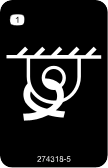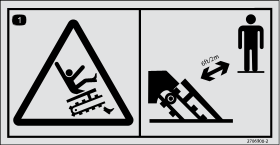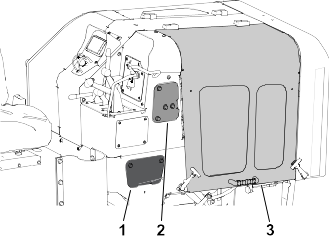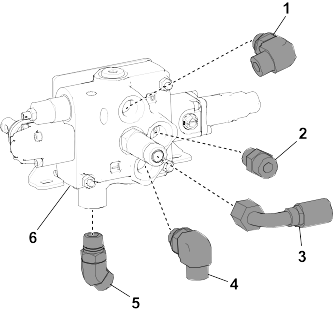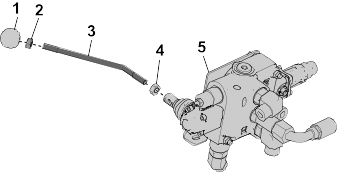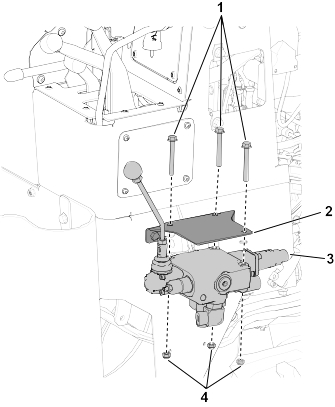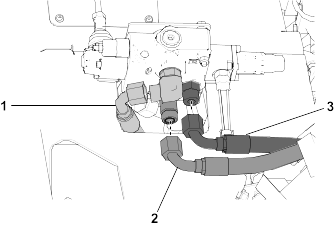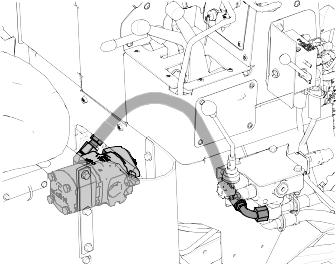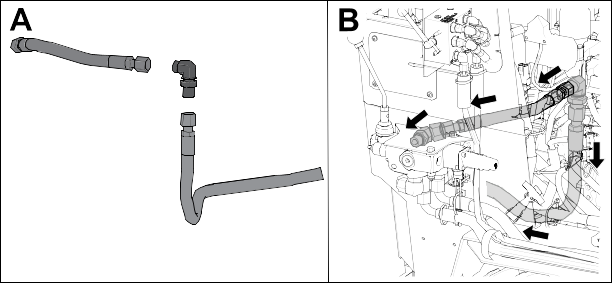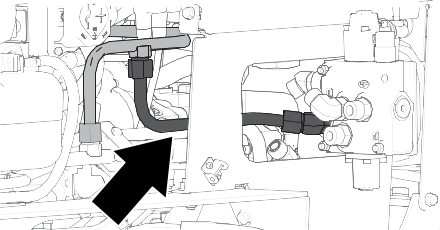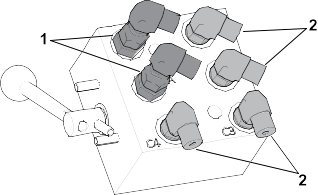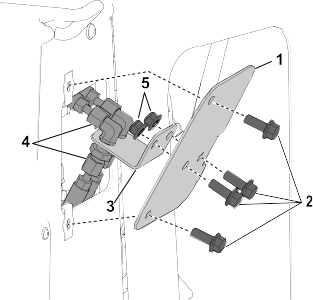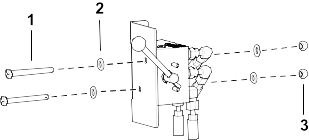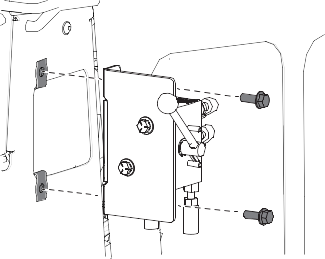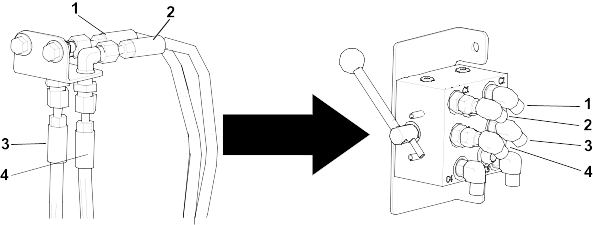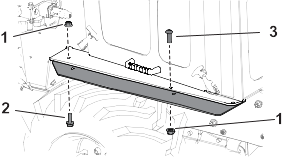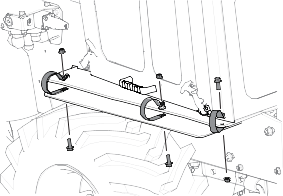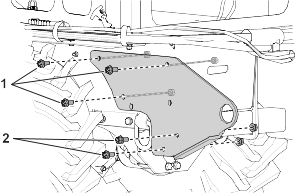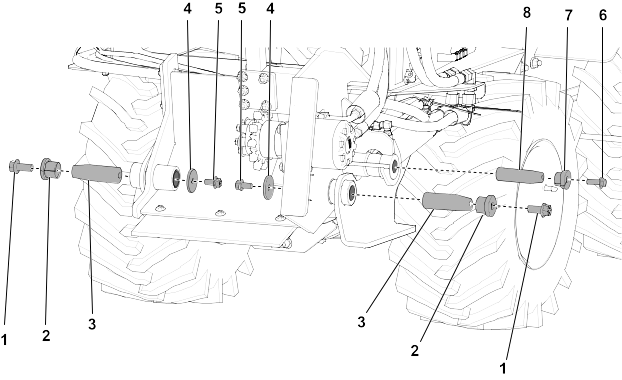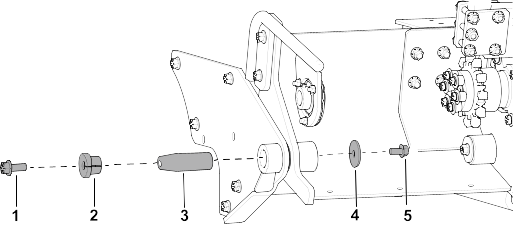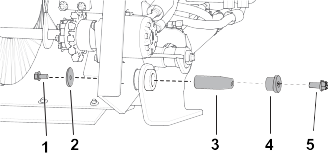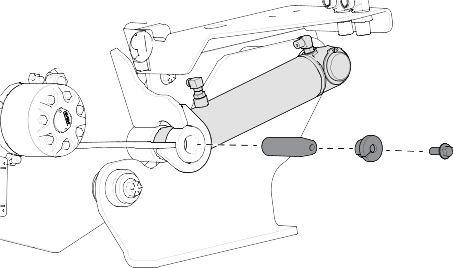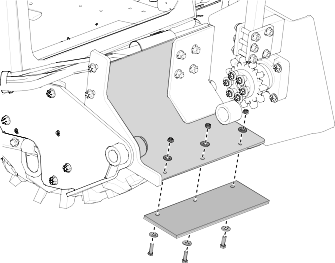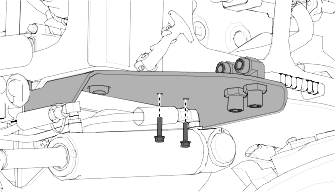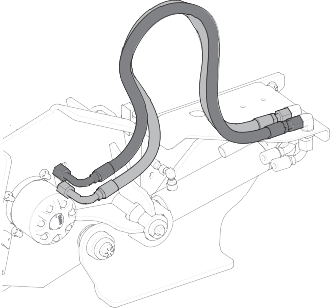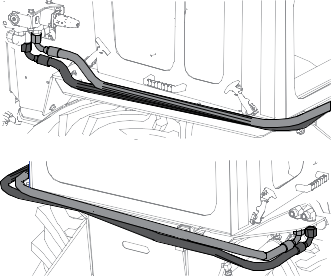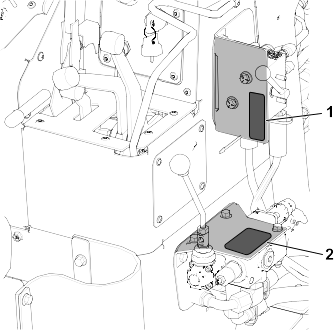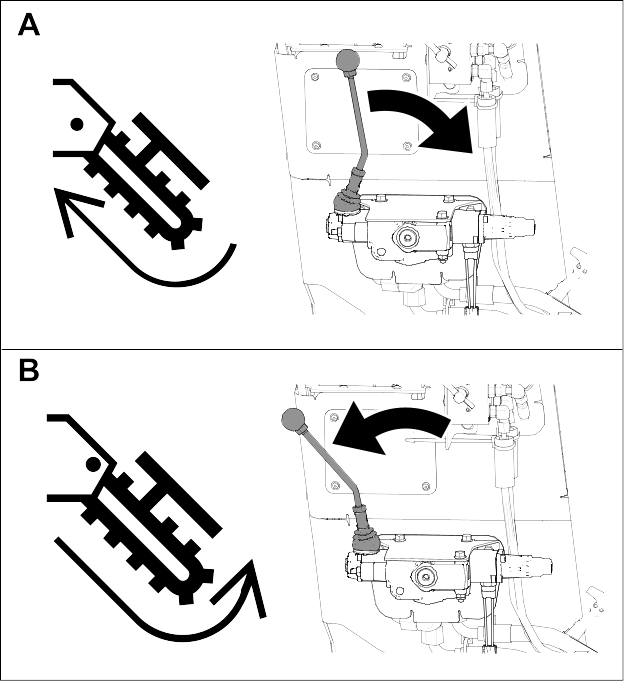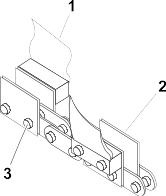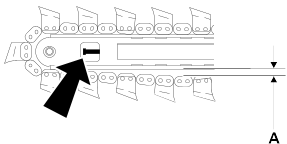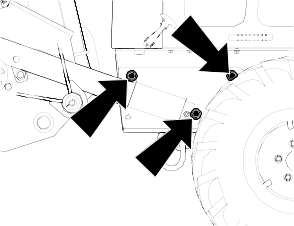Recommended Maintenance Schedule
|
Before each use or daily
|
Check the digging chain.
|
- |
- |
- |
|
Check the trencher cleaner.
|
- |
- |
- |
|
Check the trencher mounting bolts.
|
- |
- |
- |
Checking Chain Components
-
If a rock chain bit is in use, check that the bits rotate freely.
-
Clean the chain and check the bits after each use.
-
Replace the bit when the carbide cap or insert is worn.
-
If the sidebars (2) are bent or loose on the chain pins, chain spacers should be used to join the sidebars.
-
Check the pins and bushings for wear by measuring the distance between the chain pins (3) and comparing it with the new chain.
-
Check the teeth (1) for wear.
Note: Replace worn teeth using Toro replacement parts and maintaining the original tooth pattern.
Adjusting the Digging Chain Tension
Check every 10 hours. Adjust as needed.
-
Move the boom into a horizontal position and stop the engine.
-
Set the parking brake.
-
Ensure the distance from the bottom of the boom to the chain (A) measures 38–51 mm (1.5–2 inches).
-
Note: Do not overtighten the chain. Overtightening will cause chain stretch, loss of machine performance, and possible premature
chain failure.
To adjust the tension, loosen the jam nut on the adjustment screw.
-
To tighten the digging chain, turn the adjustment screw clockwise. To loosen it, turn the screw counterclockwise.
-
When the chain is properly tensioned, tighten the jam nut.
Removing the Chain
Replace the sprockets when a new chain is installed.
-
Fasten and adjust the seat belt.
-
Start the engine.
-
Turn the digging chain until the connector pin is on top of the boom.
-
Lower the boom to the ground.
-
Engage the parking brake.
-
Shut off the machine.
-
Secure the chain by clamping the links on either side of the connector pin with chain jaws as shown. Squeeze the jaws to reduce
pressure on the pin.
-
Relieve chain tension.
-
Stand clear of the chain and remove the lock key from the connector pin.
-
Drive the connector pin out of the link.
-
Unclamp the links. Slowly release the cable and lower the chain to the ground.
 |
Warning |
 |
Raised component. Crushing can cause death or serious injury. Stay away. Use correct equipment and procedures.
-
Lay the chain on the ground with the teeth down.
Checking the Trencher Mounting Bolts
-
Check the bolts every 10 hours. Tighten them as needed.

